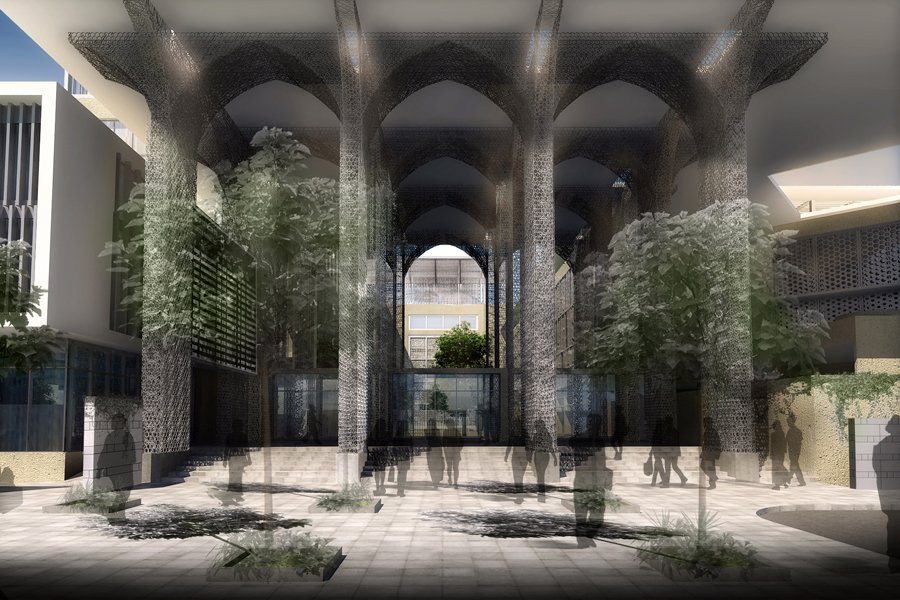Light and architecture share an inherent and timeless relationship which is often lost. We choose to explore this connection as it relates effortlessly to the connection between light and justice. The Islamabad High court is imagined as a container of light effects. Light does not only serve as a symbol of sacred justice but is also used as poetic tool to create a variety of “light” environment. The various manifestations of light reinforce the presence of justice in the courts. The dense landscape on the site has been delicately handled allowing for the intervention to emerge as a ‘creation of light’. The Islamabad high court sits on the constitution avenue, creating a quiet public presence. The building masses have been arranged to allow an engaging public front. Furthermore the building stands as a white edifice against the dark poche of the site. On an urban level, the white High Court sits pristine in the skyline, responding to the atmospheric quality of Islamabad. The public court is marked by twelve filigree light columns. These light masses create a poetic and impactful public interface. Furthermore, the “Garden of Justice” that leads to the High Court.
The Judges’ entrance in the building is marked by a grand concrete and marble staircase. A central opening permits the lobby to be infused with the focused and powerful light quality. Such an atmosphere serves as a constant reminder of the universal justice of God.
The High court is imagined as the most important volume in the scheme – an ovular intervention. As the public walks through the Garden of Justice, the experience the high Court ahead of them – a screened constitution wall within which a dome structure stands tall. Inside, a circulation pathway is marked between the curved walls of the high court and the light filtering through the constitution screen washes the corridor with the very text that informs the judicial process.















